After living in this city for almost a decade I must say that I love it. I wasn’t born in Berlin, but it has grown on me, it is home.
Berlin is a city of subtle seduction; somewhere expression was born out of oppression. A diverse Mecca for artists, here art (kunst) is an experience not limited to galleries, but alive throughout the streets, people and experiences the city has to offer.
So, I guess I want to make a tribute to this amazing place. I know, for a fact, that my words, will not be enough. But, I can try!
Staring with X Berg
Let me start by talking a bit about Kreuzberg (neighbourhood). It is one of the best-known areas of Berlin. It is better known as X-Berg.
It emerged as one of the poorest quarters in Berlin in the late 1970s, during which it was an isolated section of West Berlin. But, after the reunification, it became one of the greatest cultural centers, known for its alternative scene and counterculture.
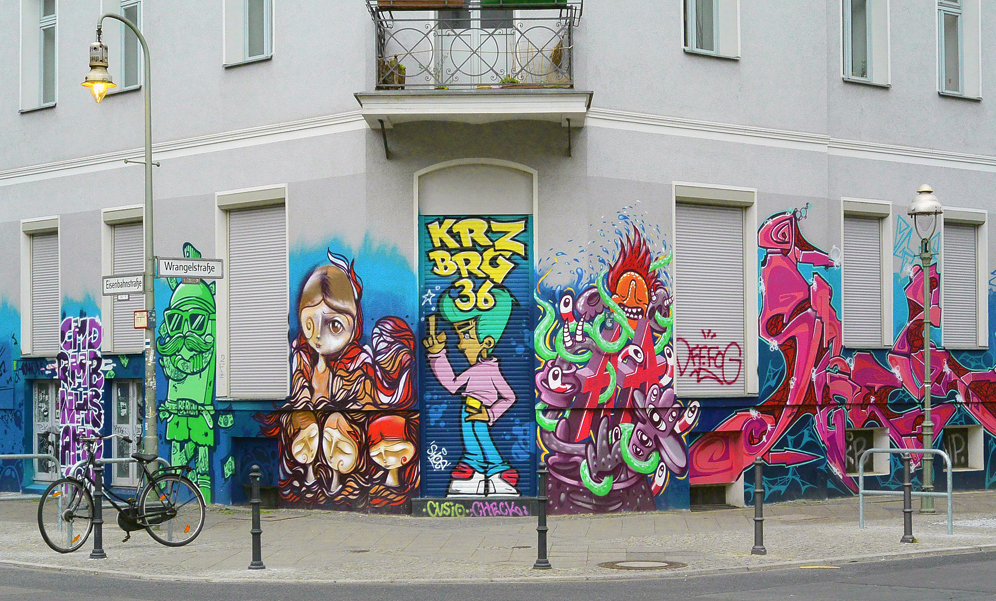
People should jump in at the deep end and immerse them selves in the crest of Berlin art scene. For this introduction, I strongly recommend: the free König Galerie.
The gallery it self is a piece of art. Matching the city’s rough exterior, this gallery has a glowing kaleidoscope of movements and colours inside too.
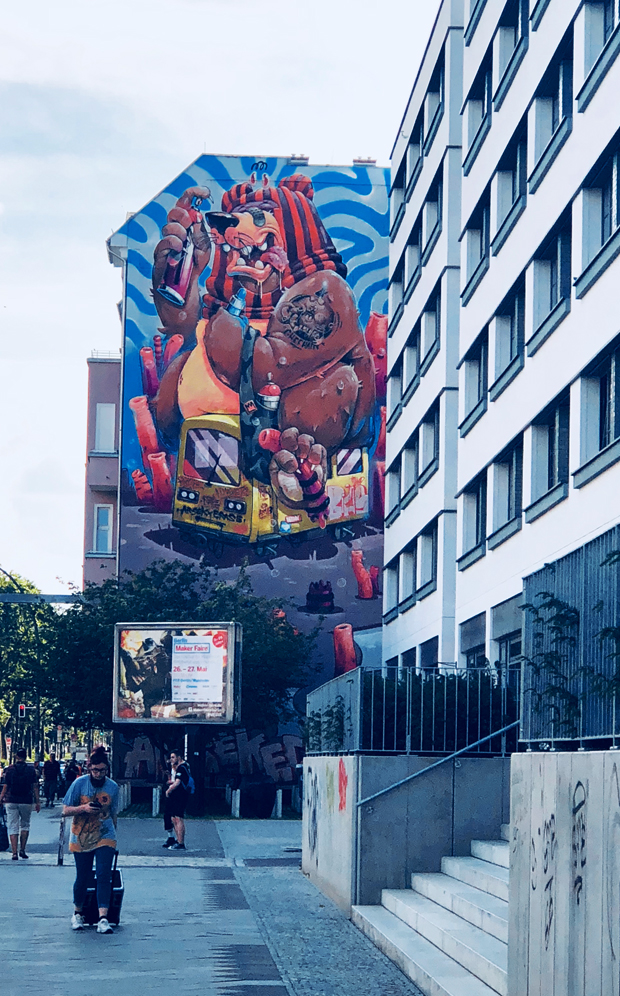
The building was constructed from post-war rubble to blend with the socialist-era of uniform city planning. Accommodating large-scale works has set this gallery apart, while frequent circulation of contemporary mediums keeps the vibe fresh.
The Berlinische Galerie is just around the corner. In 1975, Jörg Fricke resurrected a glass warehouse into this museum for modern art with the philosophy of creating a bricks-and-mortar love-letter to the magical city. It is important to note that it is located on Alte Jakobstraße, not far from the Jewish Museum.
For the first few years it was based in an office in Charlottenburg, and its exhibitions were displayed at the Akademie der Künste and the New National Gallery, amongst others.
I just want to clear something up. Although I am a great art gallery enthusiast I strongly believe that Berlin is really impregnated by its street art. They are without a shred of a doubt art masterpieces.
I am well aware that many think it is vandalism or illegal but when done properly it is beautiful and inspiring in so many levels.
The concrete barrier (Berlin Wall)
Obviously another major point of interest is the Berlin Wall.
It was a guarded concrete barrier that physically and ideologically divided Berlin from 1961 to 1989.
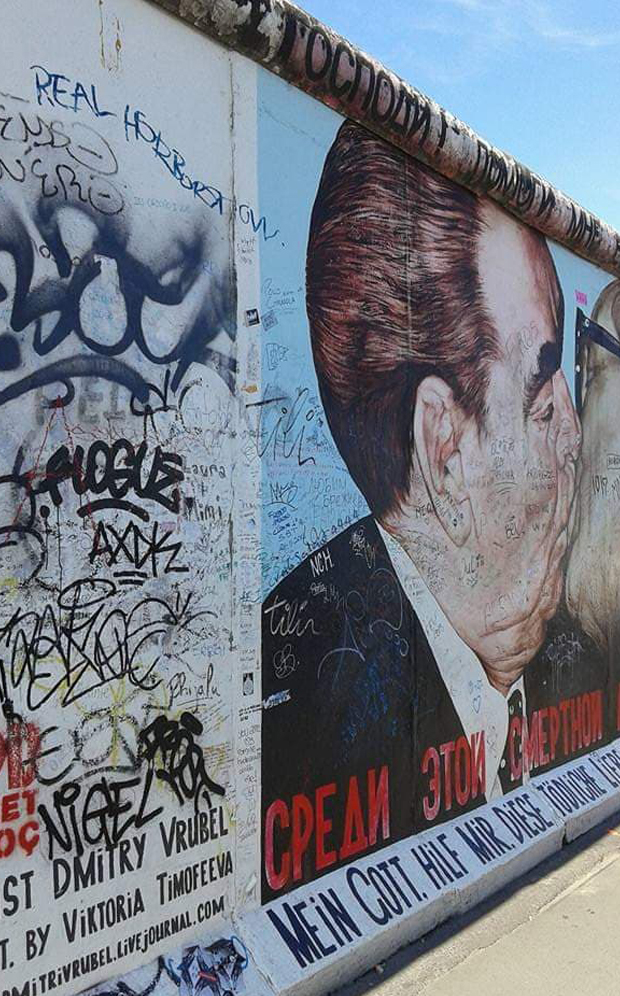
It was built by the German Democratic Republic (GDR, East Germany), starting on 13 August 1961.
The wall cut off West Berlin from all of surrounding East Germany and East Berlin.
It came down on November 1989. However, its demolition officially began on 13 June 1990 and finished in 1992.
The Wall cut off West Berlin from surrounding East Germany, including East Berlin.
Before the Wall was built, 3.5 million East Germans ignored the Eastern Bloc emigration restrictions and defected from the GDR. Most of them did this by crossing over the border from East Berlin into West Berlin. After they did that, they could then travel to West Germany and to other Western European countries.
When the east – west boundary closed life in Berlin changed even further. The vast majority of East Germans could no longer travel to West Germany.
Berlin soon went from being the easiest place to make an unauthorized crossing between East and West Germany to being the most difficult.
The barrier included guard towers placed along large concrete walls. This are was known as the “death strip” because it contained anti-vehicle trenches, beds of nails, and other defences.
Fun in Neukölln
I have had the pleasure of living almost always in Neukölln. And, I have seen so many changes in this neighberhood that its astonishing.
Something to take into consideratiuon is the fact that gentrification is a constant here. There has been an influx of students, creatives and other young professionals of mostly Western origin avoiding higher rents charged in other parts of Berlin. This has caused a knock on effect of rents to rise in some parts of Neukölln.
You are crazy, my child, you must go to Berlin!
– Franz Von Suppé –
Vegan cafés and one of a kind stores in all the streets, sandwiched between kebab shops. Keeping up with the traditions of the rest of Berlin, everything has been recycled.
Here, the Klunkerkranich offers a chill environment It is absolutely magnificent. This cool and undemanding hangout on the roof of the Neukölln Arcaden is where locals gather beneath the three-eyed cat for refreshments. Summer months bring paradigm-shifting sunsets over the city-scape of old and new Berlin colliding. Live music events and an eclectic indoor bar create a paramount experience.
The Tiergarten
Berlin has seen its fare share of events. I mean, aside from the war, the destruction it encountered, being subjected to the wall both physically and mentally, Berlin is a puzzle of memories.
One of the many puzzle pieces is the Tiergarten, Berlin’s most popular inner city park. The park is 210 hectares (520 acres) in size and is among the largest urban gardens of Germany.
It is a locality within the borough of Mitte, in central Berlin. It is an immense urban park that acts as a lung for the city.
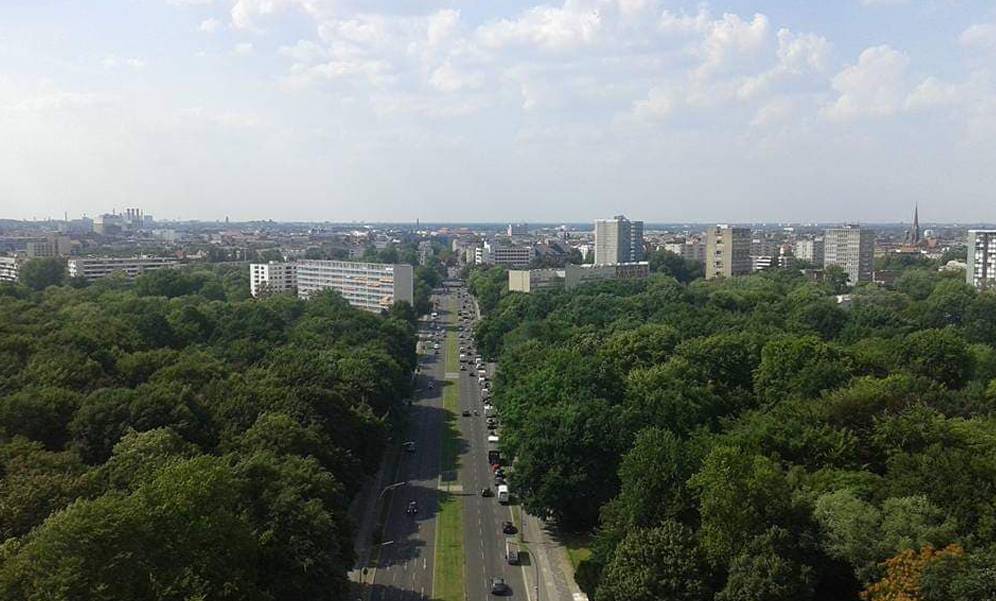
Before the German reunification, it was a part of West Berlin.
It was designed by landscape architect Peter Joseph Lenné in 1830. Then, during the industrialization (19th century), a network of streets was laid out in the Hobrecht-Plan in an area that came to be known architecturally as the Wilhelmine Ring.
The Reichstag building by architect Paul Wallot opened in 1894.
After 1944, the city was devastated and the park was severely damaged.
Near the Tiergarten park is the former location of a villa at Tiergartenstrasse 4. This location is one of a kind because it is the place where more than 60 Nazi bureaucrats and doctors worked in secret under the “T4” program to organize the mass murder of sanatorium and psychiatric hospital patients deemed unworthy to live.
The German national memorial to the people with disabilities systematically murdered by the Nazis was built in 2014.
The food
On another note, food is such an important part of the charm of this city. Obviously, there are great places to eat at in Kreuzberg. How ever, I suggest ORA located in Oranienplatz.
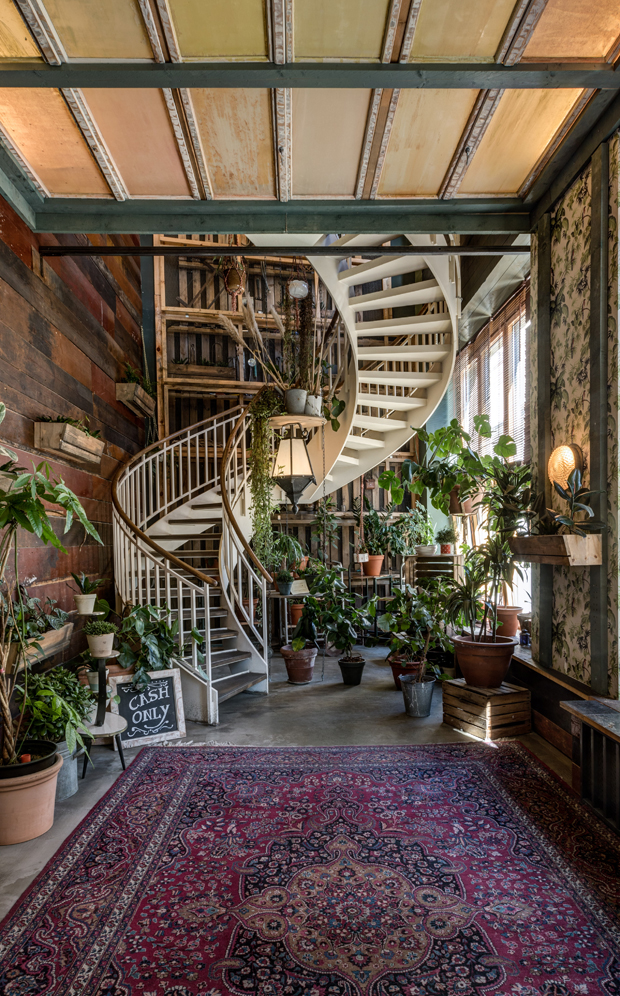
This cafe was once upon a time an apothecary; shelves that were lined with vials of medicine are now organised with wine glasses and coffee necessities.
The grandiose bar wraps around the room while olive-green chairs invite you to stay for treats all day.
Continuing with this mesmerising city I feel obligated to write about the HOUSE of SMALL WONDER. It is by far the dreamiest, most picturesque brunch-spot.
Once you enter, the focal point is a spiral staircase surrounded by Japanese-inspired art mixed with an Alice-in-Wonderland vibe.
When you go up the stair case you will enter a cosy room that transports you to a greenhouse of sorts. After all, here food is art.
It has vintage wooden interiors taht are bathed with sunlight. It is all engulfed by lush greenery and nostalgic music.
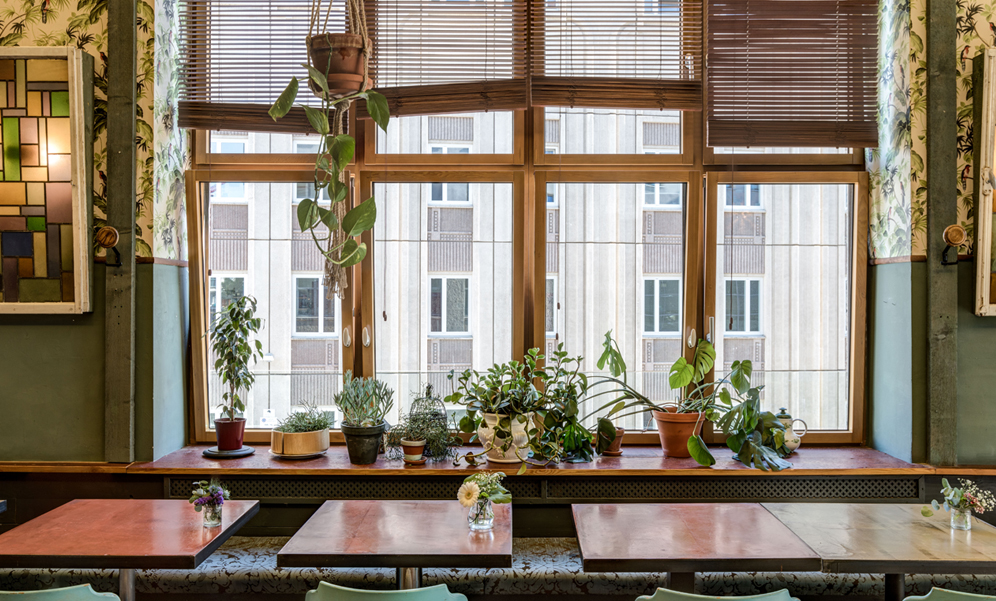
The food is definetly one of a kind. Always using a mix of organic, locally sourced ingredients with a bit of Japanese flavours.
They provide a creative kitchen and deliver dishes such as poached organic eggs and wasabi hollandaise.
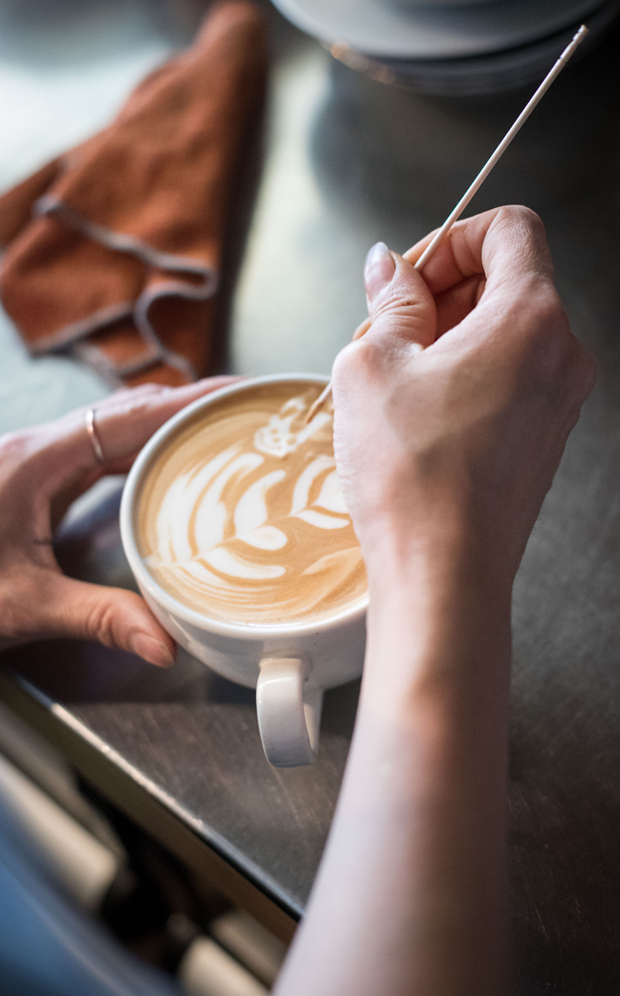
Breads, croissants and pastries are freshly baked throughout the day and that goes perfect with a cappuccino or a regukar cup of Joe.
Continuing with the topic if great places with great food we find ourselves with Zenkichi Berlin.
This place is to die for and it has become one of the cities best dining experiences since 2015.
It was modelled after typical Tokyo dining establishments. Completely surrounded by bamboo and jazz. As if all of this was not enough, the ambience goes hnad in hand with Japanese hospitality.
Further more, they have the largest selection of premium Junmai Sake in Germany and specializing in contemporary Tokyo style cuisine.
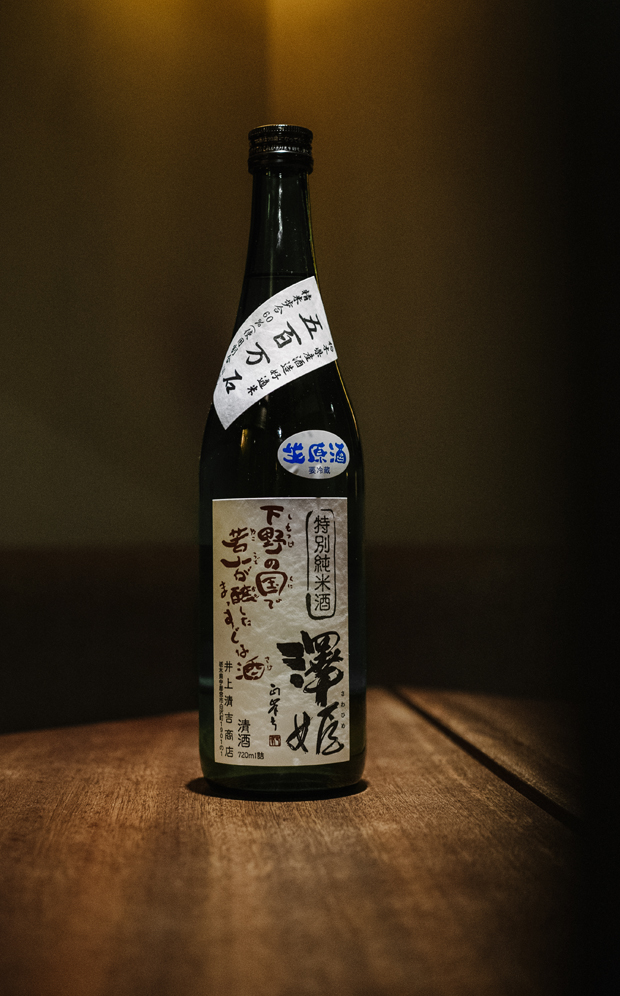
Zenkichi is known for its unequaled ambiance and respect for Japanese cuisine and craftsmanship.
The dishes are both contemporary as well as authentic, there is always a unique selection of sakes that have been personally curated by Zenkichi’s founder and sake sommelier Motoko Watanabe.
Their mission is simple but difficult to achieve for many. They want to serve high quality modern Japanese cuisine and immerse its guests in Japanese culture.
Both of this fantastic culinary experiences where created by Motoko Watanabe a Tokyo born restaurateur and Shaul Magulies. Motoko Watanabe is a certified sake sommelier and has been an international restaurateur for over a decade.
Shaul Margulies grew up in Jerusalem and New York City. He is an accomplished restaurateur and culinary entrepreneur with over twenty years of experience working in the restaurant industry.
The contrasts
I guess that a great deal of the magnetism Berlin has is a result of the many contracts it has to offer. And, by such I mean that it is here where bunkers are open for tourists.
This unique experience is provided by Berliner Unterwelten (Subterranean Berlin). The museum offers tours in several languages (german, english, spanish, french, danish, dutch and italian) of some of Berlin’s most important underground structures: bunkers, abandoned subway stations, air raid shelters dating back to World War II and tunnels for smuggling people out of East Germany during the Cold War.
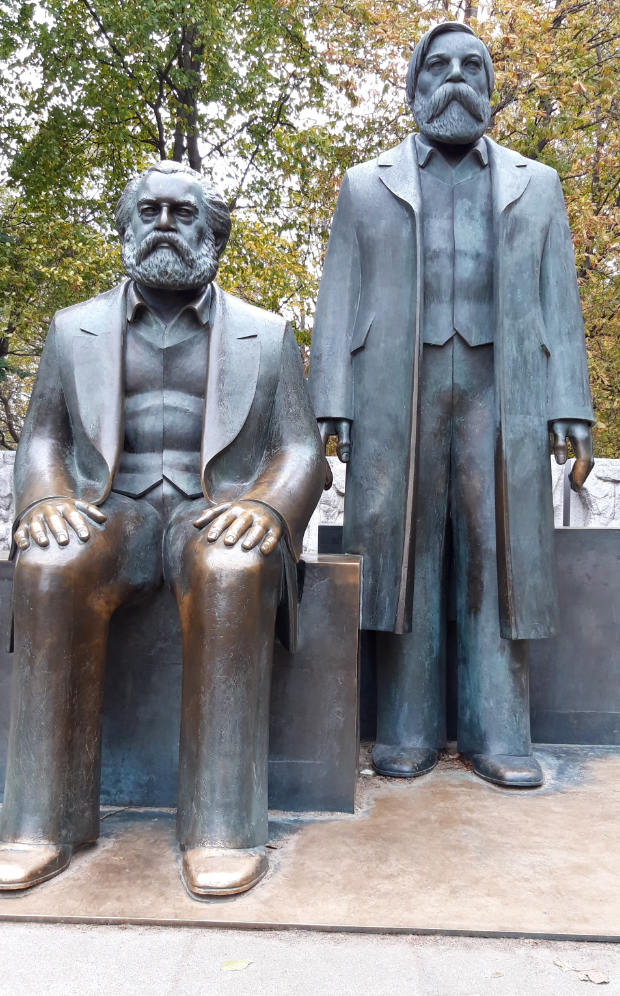
The Berliner Unterwelten Association was founded in 1997 by a group of very different people who were interested in diverse aspects of the underground. The basic idea was to explore, document and preserve the city’s subterranean architecture.
I must say that although I have visited a few times it is a strange feeling to come into a dark, half-blasted bunker, see parts of stairways and cables hanging out of the wall and walk through rubble in between holes that go several meters down into the ground. It’s eye-opening!
The city of Berlin really surprised me in the best possible way. I pictured it as being sort of a grungy/industrial/hipster mecca.
Out of such a dark history, Berlin has emerged as a fun and fanciful city. There are touches of whimsy hidden all over the city to be discovered.
From the gardens, to the street art, to the beach clubs, you’ll find fun little touches designed for the sole purpose of making passersby smile.
The Wall was an edifice of fear. On November 9th, it became a place of joy.
Former German President Horst Köhler, Berlin, November 9th 2009
Walking around Prenzlauer Berg
Changing subject a bit I want to note that Prenzlauer Berg (neighbourhood) gives you the feeling of simultaneously going back and forward in time. I mean, there are traditional street markets meeting asian-fusion burger bars, or green, leafy parks filled with splatterings of street art.
No matter what your feelings and thoughts are, a fact remains: Berlin is art and history merged in the most magnificent manner. Perfect examples are the Berliner Konzerthaus or the Berliner Dom.
The Berlin Konzerthaus is a concert hall situated on the Gendarmenmarkt square in the central Mitte district of Berlin housing the German orchestra Konzerthausorchester Berlin. It was built as a theatre from 1818 to 1821 under the name of the Schauspielhaus Berlin, later also known as the Theater am Gendarmenmarkt and Komödie.
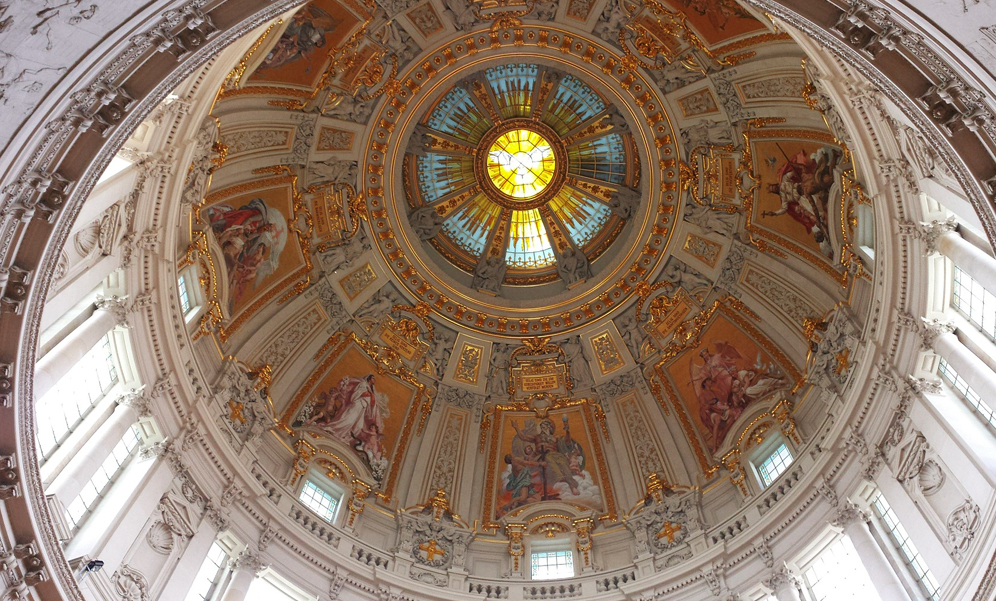
After the Second World War it was used as a concert hall. Acoustically speaking, since 2004, it has been considered to be amongst the five best concert venues in the world for music and/or opera.

The Berlin Cathedral (Berliner Dom) is located on Museum Island in the Mitte borough. The current building was finished in 1905 and is a major work of Historicist architecture of the “Kaiserzeit”.
I think its important to note that it has never been a cathedral since it has never housed the Bishop. He, the bishop, is based at St. Mary’s Church and Kaiser Wilhelm Memorial Church in Berlin.
WWII was very damaging to Berlin and the Cathedral was severly impacted. In 1940, the blast waves of Allied bombing blew part of the windows away. In 1944, a bomb of combustible liquids entered the roof lantern of the dome. Sadly, the fire could not be extinguished at that unreachable section of the dome. So the lantern burnt out and collapsed into the main floor.
In 1975, reconstruction started, simplifying the building’s original design and demolishing the northern wing. The demolition and redesign cost 800,000 marks, while the restoration (done on the cheap) cost just 50,000 marks.
The Berliner Dom (Berlin Cathedral) has an indescribable, ethereal magnificence about it. No photo will ever do the interior justice.
The greatest cultural extravaganza that one could imagine.
Something for everyone
At least, for me, I love the fact that in Berlin you can be and do whatever you want. No one really cares.
People don’t care what your job is, they don’t want to buy their apartments. They are by far, an art devoted crowd.
In my point of view, Berliners seem to have far more hobbies, creative pursuits and eclectic interests than many other people.
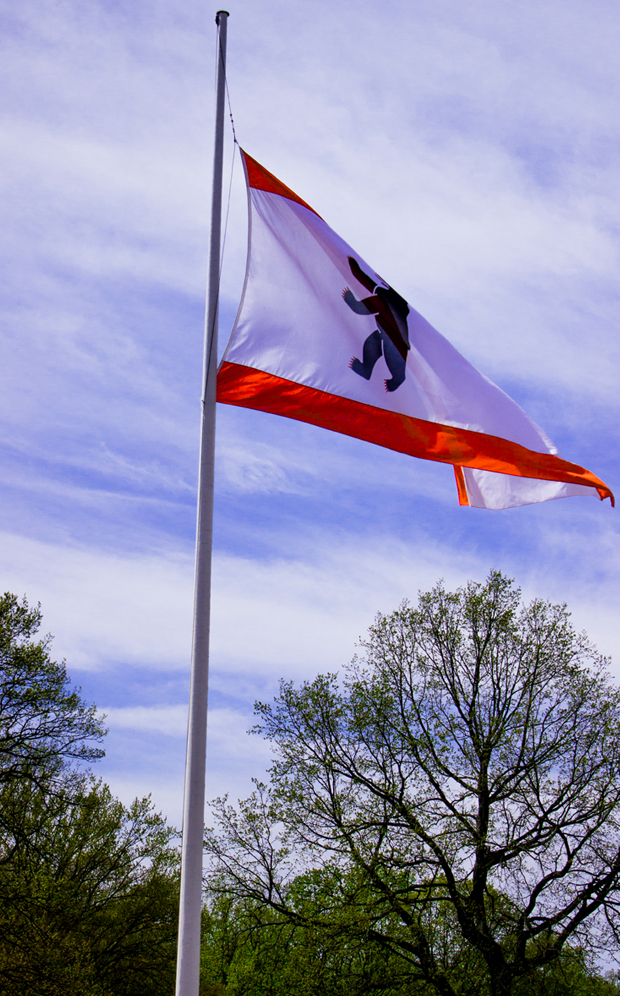
Another amazing thing is that Berlin is freaking cheap. At least compared to other parts of Europe I’ve spent time in.
As I have said before, this place offers something for each person. And, keeping that in mind I must talk about the markets.
There are so many to choose from! Farmer’s markets, flea markets, Turkish markets, art markets. They give you a sense of community, trade, resourcefulness.
So, yes, this city has a lot to offer. But, I guess what really makes you fall in love with it is that contrast of lives that are gone and are just flourishing, the dead and the loving, the dark and the colourful. The saying for the most part goes: Berlin is poor but sexy. But in my humble point of view it was best described by Bowie himself. He stated that “The greatest cultural extravaganza that one could imagine.” This statement alone, summons all thet Berlin is, was and will be in the future. It is a subtle seduction.


